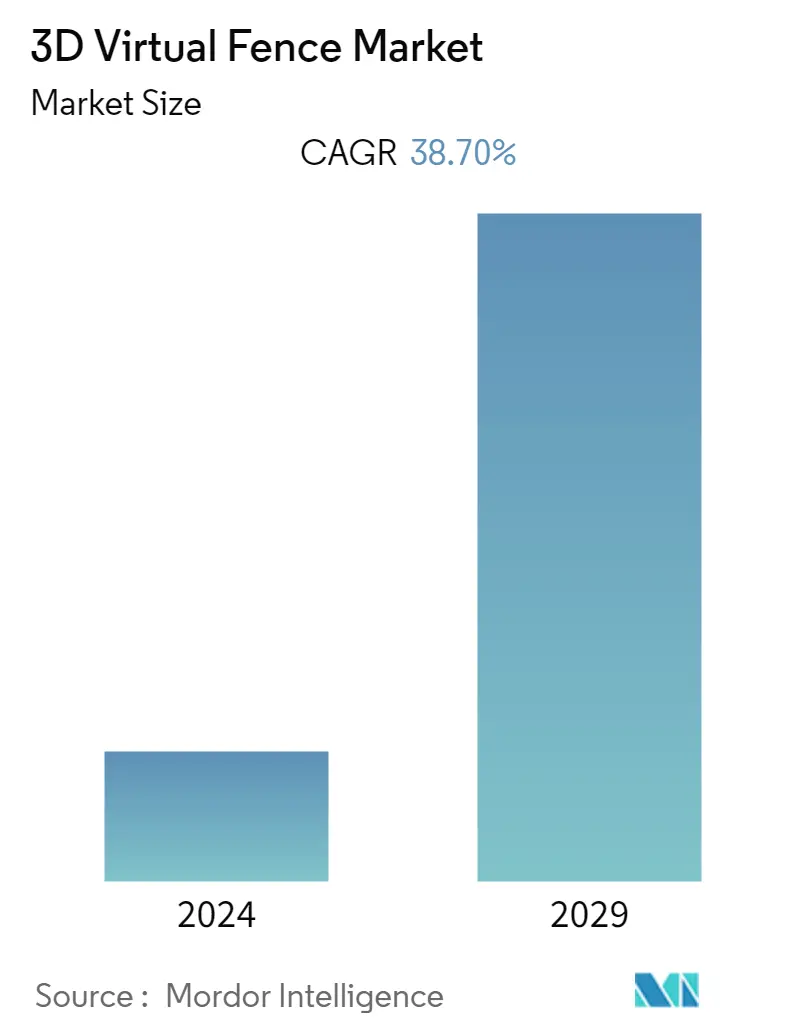Market Size of 3D Virtual Fence Industry

| Study Period | 2019 - 2029 |
| Base Year For Estimation | 2023 |
| CAGR | 38.70 % |
| Fastest Growing Market | Asia Pacific |
| Largest Market | North America |
| Market Concentration | High |
Major Players
*Disclaimer: Major Players sorted in no particular order |
Need a report that reflects how COVID-19 has impacted this market and its growth?
3D Virtual Fence Market Analysis
The 3D virtual fence market is expected to register a CAGR of 38.7% during the forecast period (2021 - 2026). Current trends in refurbishing borders suggest their transformation toward flexible, sophisticated, and mobile devices capable of tracking, filtration, and exclusion.
- Increasing risk of terrorism and infiltration is the major market growth driver. For instance, in April 2019, the United States declared Maulana Masood Azhar as a global terrorist after the terror attack on CRPF convoy in Pulwama district of Kashmir. The United States also declared Iran force as a foreign terrorist organization. This points toward the increasing terrorist threat toward the world.
- There have also been government regulations regarding perimeter security. The US government agency called FEMA provides funds to eligible applicants for the installation of perimeter security enhancements that protect employees, visitors, and building functions and services from outside threats. In the United Kingdom, the government developed PAS 68, a publicly available specification for vehicle security barriers, developed in partnership with perimeter security manufacturers. It has become the UK's standard and the security industry's benchmark for hostile vehicle mitigation (HVM) equipment.
- However, high maintenance and restoration costs are the factors which hinder the installation of 3D virtual fences. The US Department of Homeland Security canceled a project to build a virtual fence on the Southwest border, between the United State and Mexico because the project cost escalated from an initial USD 67 million to a final USD 1 billion (albeit for a longer virtual fence).

